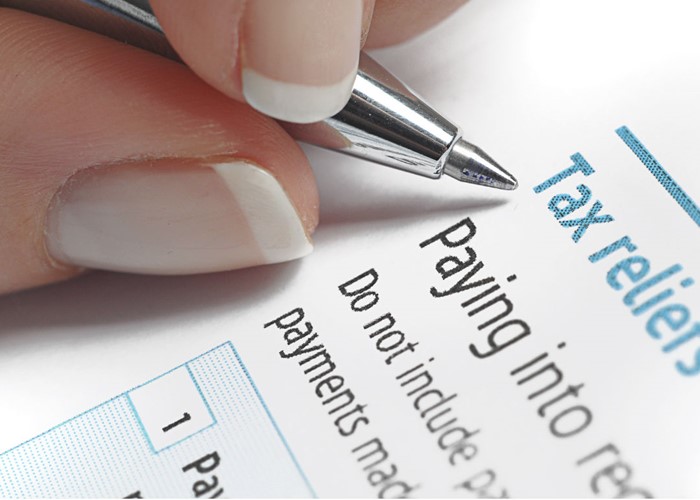Thousands told to pay extra tax

The taxman wants 450,000 of us to pay an extra £180m in income tax.
2011 has got off to an inauspicious start, tax-wise. First we had the VAT rise, taking one of the UK's most hated taxes up to a rate of 20%.
And now we’ve had confirmation that HM Revenue & Customs (HMRC) has made another mistake, which will lead to hundreds of thousands of us having to shell out extra income tax.
Income tax shortfall
What’s more, the shortfall that the taxman has identified is not exactly recent – it dates back to the 2007/8 tax year!
Around 450,000 are affected, and will face demands from the taxman for a whopping £180m. That works out as an average of £400 each, a hardly insignificant sum, particularly at the moment with many of us finding every penny we earn swiftly spent.
How you’ll pay
As has previously been the case, anyone owing less than £300 will have their debt wiped out.
However, if you do have to pay a bit extra, you’ll hear about in via a letter from HMRC over the next three months. You won’t have to actually do anything either, as the taxman plans to simply collect the money you owe via larger PAYE contributions. Though I’m not sure I’d be happy to leave it to them not to make a hash of that as well...
Repeated mistakes
This is sadly not the first time HMRC has been guilty of making a hash of our tax responsibilities in recent times.
Rob Powell hits the streets to find out how much you know about the VAT rise!
In January last year, the taxman sent out a whole stack of incorrect tax codes, a move that could have cost the affected more than £100 a month.
Then, in September, HMRC revealed it had found a whopping six million errors for the tax year ending in April 2008, and would again be asking for a few extra quid from many of us, as we looked at in Tax code error in your favour: Collect £££.
These errors are all being blamed on the taxman’s new IT system.
So what can you do to try to ensure you are paying exactly what you should be each month?
Checking your code
The place to start is of course your tax code. Clearly it’s a mistake to rely on HMRC to get it right, so let’s make sure we know exactly what our own code should be!
Some of you will be sent your codes by the taxman each year, but for many of us the one way to find out our current tax code is by looking at our wage slips. At the bottom of the slip should be able to find a code of several numbers and a letter.
If your code appears as a number followed by a letter, then the number multiplied by ten is how much income you can earn in a year before paying tax. So if your code is 647L, for example, then you can earn £6,470 before the taxman starts taking a slice. The letter then represents how that number should be adjusted following changes from the Treasury. Below are some common letters used in tax codes.
|
Letter |
Reason for use |
|
L |
For those eligible for the basic Personal Allowance. For the 2010/11 tax year, it stands at £6,470 |
|
P |
For people aged 65-74 and eligible for the full Personal Allowance |
|
Y |
For people aged 75 and over and eligible for the full Personal Allowance |
|
T |
Means other things must be reviewed within your tax code, such as the income-related reduction to the Personal Allowance |
|
K |
When your total allowances are less than your total deductions |
However, there are variances in the forms of tax codes. For example, your code may have two letters but no number, or the letter D followed by a 0. These mean that you probably have more than one source of income. If your code is a little out of the ordinary, or if you have more than one tax code, have a read of the multiple code section of the HMRC website.
Is your tax code correct?
Ok, so now you’ve worked out what your tax code is and what it means. But is it actually the appropriate tax code for your circumstances?
Related how-to guide

Cut your tax bill by thousands
Tax may be an inevitable fact of life, but there’s no reason to pay more than you have to!
See the guidePart of the problem with tax codes is that they are sometimes determined based on information that is up to three years old, a recipe for errors. And it’s down to you to inform the taxman if they’ve made a mistake with your code.
You’ll have to work out for yourself whether the tax code you’ve been issued with is right, but I would advise having a go on the HMRC Income Tax checker, which can give you an indication of whether the tax you’ve paid in the past has been correct.
If you believe there has been a mistake and that you may be owed a rebate, you should contact your tax office (their contact details will be on your tax code letter). The tax office will need your tax reference and National Insurance numbers so make sure you have them to hand when you contact them.
More help from lovemoney.com
For great how-to guides, explaining everything from how to cut your mortgage costs to how to make money in every room of your house, head over to our Guides section.
If you need help with a specific issue, why not see if your fellow lovemoney.com users can help by asking a question in our Q&A section?
More: The unluckiest address in Britain | Earn 10% on your savings
Most Recent
Comments
-
This country is corrupt. The rich corporations get away with milllions tax free , read Private Eye and you will realise what mugs we are supporting such a system. But what can we do?, Labour were as bad as the Con-libs, politicians are in the pockets of the rich , perhaps hoping for the odd donation - or two, or a nice cushy job after politics?, who knows.
REPORT This comment has been reported. -
To be honest with you, I am fed up to the back teeth with HMRC. One letter gives me one code then I get another.Then they tell me I owe them! Then they tell me I'm due a refund!! I have rung them umteen times, and they always blame the employer for using the wrong codes. they tell me to ring the employer.The employer tells me it's not their fault !! Why? because the tax people supply the codes. !!! Back to the tax office!! Guess what it is now apparently all my fault for not checking it all. I defy anyone to keep track of the mess the tax office makes. I asked them why I should have to repay this when they had made the errors in the first place and that's when miraculously it became my error and not theirs. For the second time I have been given a refund and yet HMRC are going to start collecting an alleged underpayment taking effect from April. Nearly all my working life has been in the public sector, and it beggers belief that they get it sooo.... wrong sooo... often and get away with making us pick up the tab.There is something seriously wrong with this set up.
REPORT This comment has been reported. -
This country is 50 years overdue for a complete overhaul of its tax system. It's too easy for the wealthy to avoid paying tax and the system could be called currupt. Europe, including the UK laughably set simple tax rules for the eastern block countires so corruption could be illiminated. It seems that the very weathly end up paying less than the normal PAYE people in this country. I'm against anyone 'richer' having to pay more tax, just becuase they earn more, but everyone should pay the same percentage and not use loop holes to have their deceased four cousin, second removed granmother's half sister to filter tax through. ...and I'm not sure who Cameron has been listening to but it has been proved that lowering taxes increases tax revenue... I'm for one am doing my part in spending less so the government receives less tax! Nice to know cakes are zero VAT rated :)
REPORT This comment has been reported.
Do you want to comment on this article? You need to be signed in for this feature









20 January 2011